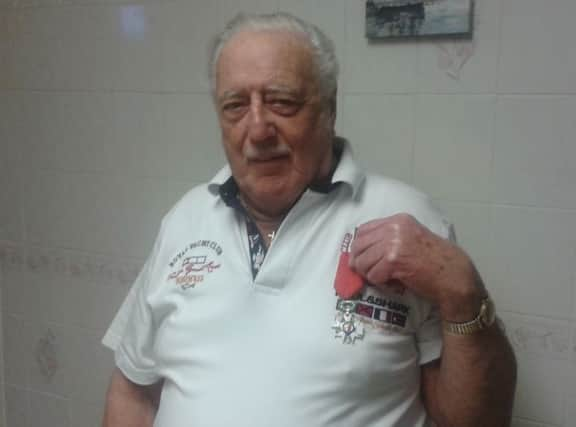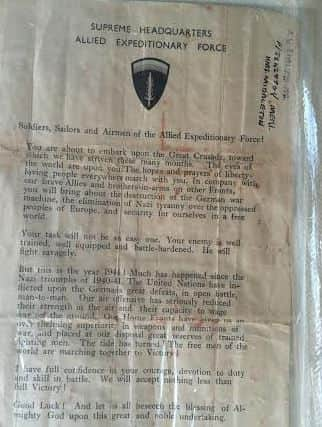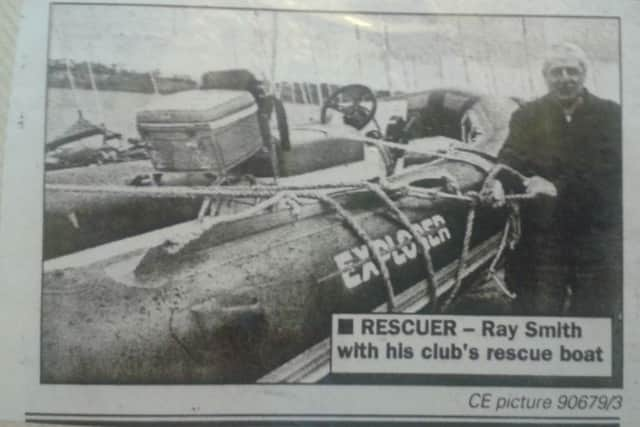Grandfather who rescued 150 people in Northampton floods awarded France's highest honour


Ray Smith, aged 90, from Westone, served across the world aboard the HMS Middleton during the Second World War.
He has already been recognised with a British Arctic Star and Russian Ushakov medal for completing a number of vital escort missions in atrocious conditions to help keep Russia in the war.
Advertisement
Hide AdAdvertisement
Hide AdMr Smith has now been given the highest honour France can bestow, the Legion of Honour medal, for helping shell German soldiers and thereby allowing the Allied army to get ashore and begin to turn the tide of the war.


Mr Smith said: “It really is something.
“I’ve taken it everywhere with me and shown lots of people.
“All six rinks of the bowls club at Kingsthorpe have seen it.
“I took it with me to the barbershop and joked that they ought to roll out the red carpet now.


“They’ve all been shaking my hand and saying well done.”
Mr Smith was tasked with reloading the guns of the HMS Middleton, a nimble but lightly armed destroyer.
Advertisement
Hide AdAdvertisement
Hide AdIts relatively low weight meant it could come in close to the shoreline and it was ordered within 400 yards of Sword Beach so it could accurately reach targets far inland.
In particular, Mr Smith recalls an army officer, who had come aboard, directing fire at a German-occupied hotel and the HMS Middleton all but destroying it.


For most of the day, an 18-year-old nine-stone Mr Smith had to load and reload the huge 16 kilogram shells after each firing.
There was no cover for the sailors, although the danger didn’t just come from the enemy.
Advertisement
Hide AdAdvertisement
Hide AdSuch was the intensity demanded by the ship’s captain that, against all safety rules, a shell that refused to be fired (and was therefore reducing for a few minutes the number of guns in the bombardment) was ripped from the breach while still live and dumped by a brave sailor over the side. It could very easily have been catastrophic.
But the luck of the Middleton, and Mr Smith, held.


The ship completed its tour of duty by patrolling the Channel for submarines and torpedo boats, fighting almost every day.
Long after his retirement from the navy, Mr Smith was involved in an historic day closer to home, the Easter floods of 1998 in Northampton.
In charge of the rescue vessels of the Pitsford sailing club, he was alerted by police at 6am and asked to bring the large boat by trailer to St James, where the water had reached 15ft deep.
Advertisement
Hide AdAdvertisement
Hide AdAll day he sailed up and down the side streets - with two firemen, also called Smith - taking about 150 people from their homes to safety.
Mr Smith said: “Two days later, I went back and couldn’t believe where I’d had the boat; in doorways and gardens.
“Going down the streets, I never broke so many car wing mirrors.
“But I’m good with a boat, I can put it anywhere.”
At the time, he told the Chron: “It took a bit of damage. It wasn’t designed for the streets of St James.”
Advertisement
Hide AdAdvertisement
Hide AdBut the most internationally famous action he took part in remains the D-Day landings.
Modest Mr Smith insists he was just doing his job: “You just did what you had to do and you never had time to think about it.
“I can’t remember ever being scared.
“People did die, but we thought: ‘I’m glad it’s not me’. You had to think that way.”
Whereas Mr Smith is humble, the French Government is unequivocal.
Advertisement
Hide AdAdvertisement
Hide AdIts letter accompanying the honour, which gives him the rank of ‘Knight’ in France, reads: “As we contemplate this Europe of peace, we must never forget the heroes like you, who came from Britain and the Commonwealth to begin the liberation of Europe by liberating France.
“We owe our freedom and security to your dedication, because you were ready to risk your life.”